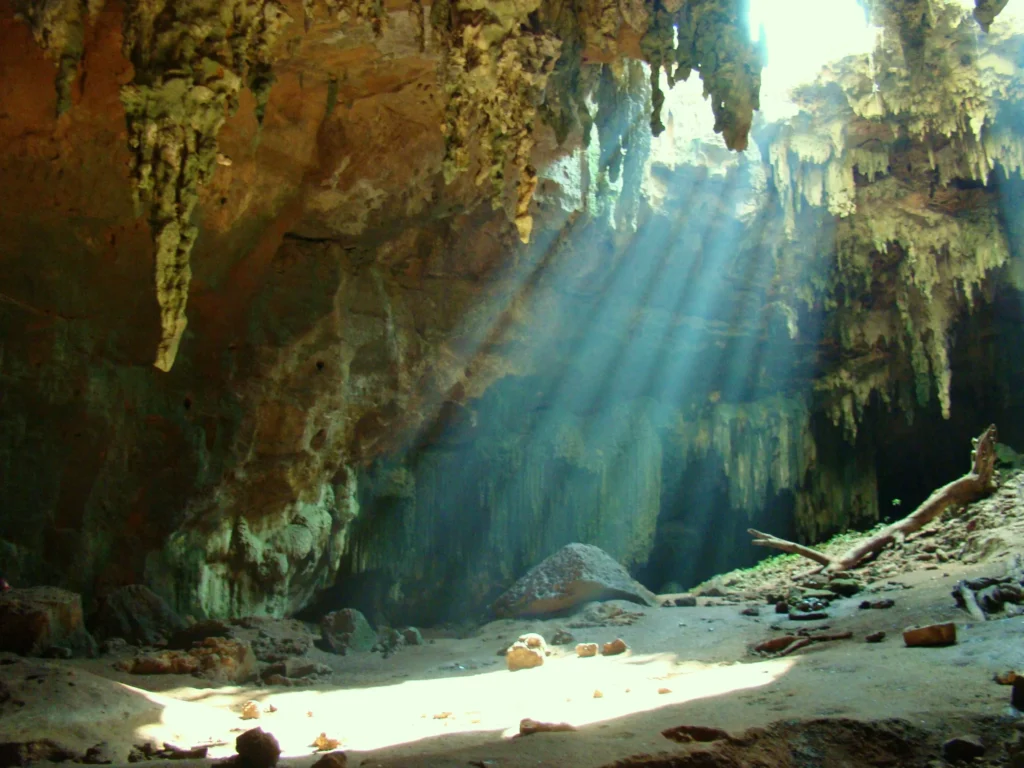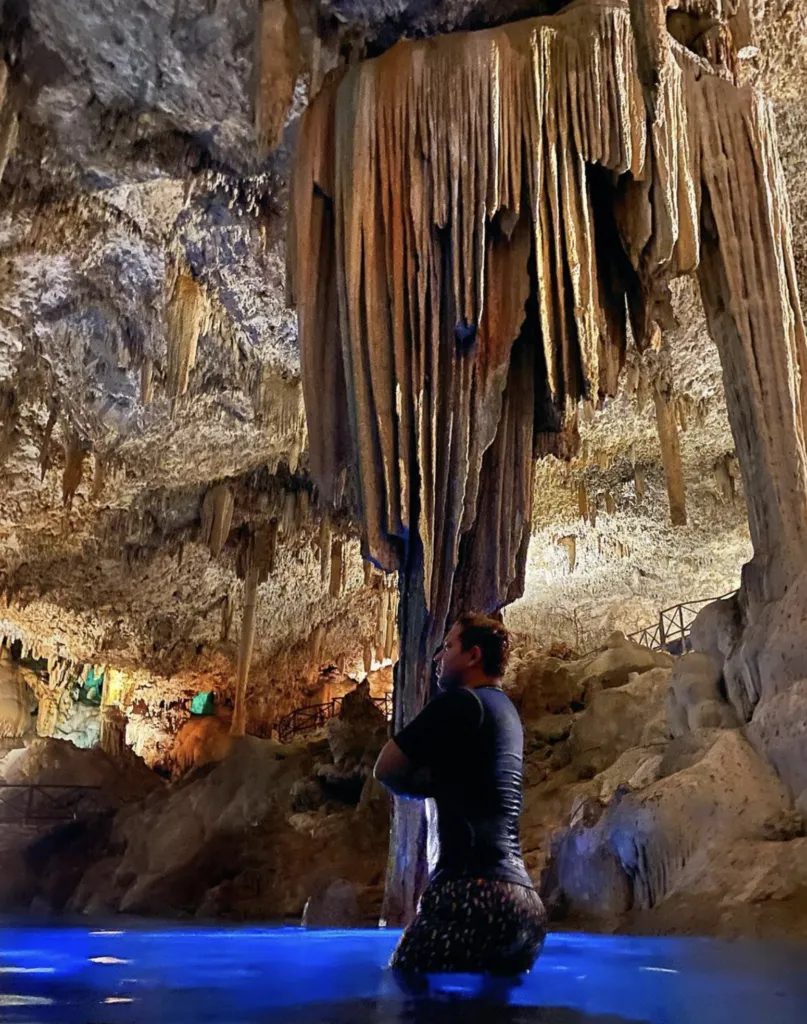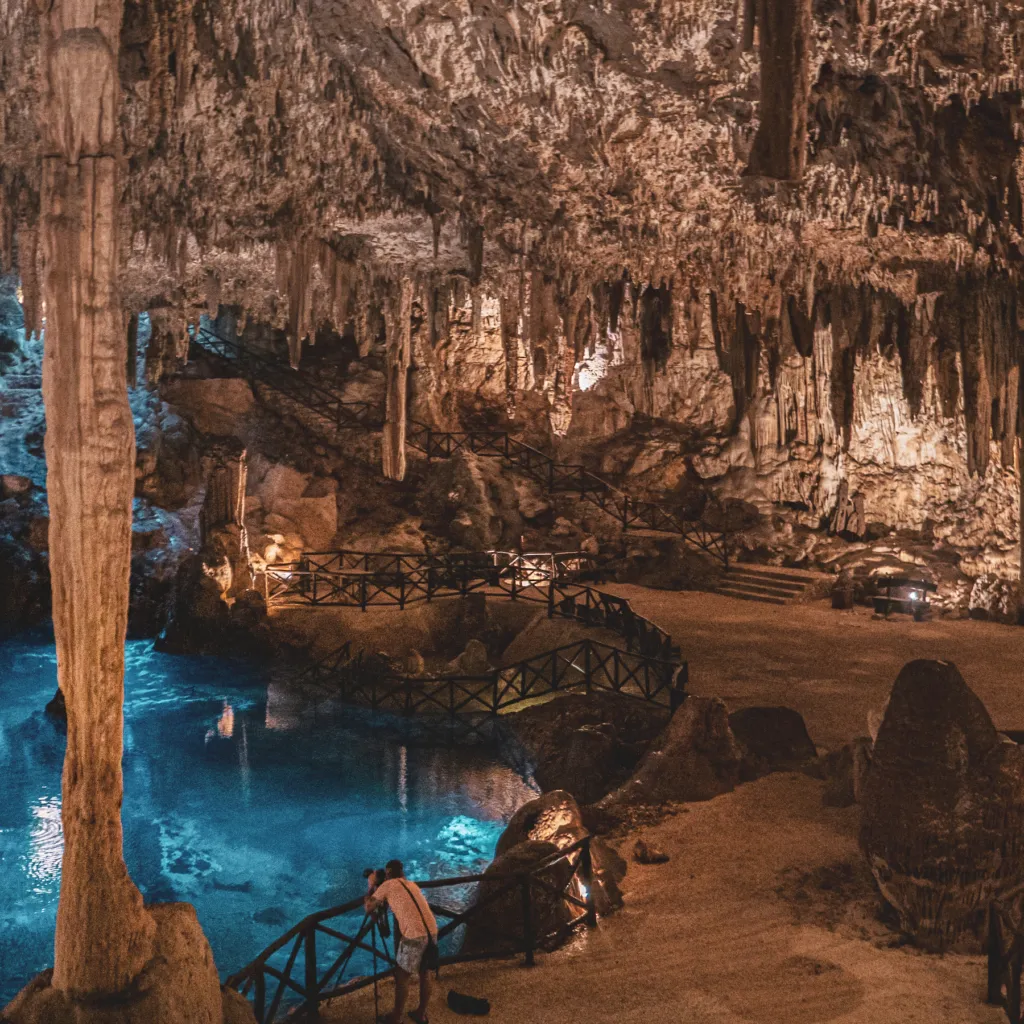
The Yucatán Peninsula, in southeastern Mexico, rests upon limestone rock formed from marine organisms' remains. The porous nature of limestone allows rainwater to create caves and cenotes through karstification. Yucatán boasts over 6,000 registered cenotes and numerous caves.
In Yucatán's caves, stalactites and stalagmites form from the dripping of water rich in calcium carbonate. Stalactites hang from the ceiling, slowly forming over time, while stalagmites rise from the ground. These structures can merge to create impressive columns.

Zazil Tunich cave, located in Tecoh, is renowned for its cenote and the largest stalactite in Yucatán, known as "El Mamut." This 12-meter formation has grown for over 400,000 years through the gradual deposition of calcium carbonate from the cave's ceiling.
In addition to stalactites and stalagmites, Yucatán features rock curtains and cave pearls. Curtains form as water flows and deposits layers of calcium carbonate on the cave walls, while cave pearls develop around nuclei such as grains of sand.

Yucatán's caves also impress with their expansive vaults, formed by the dissolution of limestone over millennia. Some caves, like Sac Actun, have vaults that reach over 30 meters in height, creating an atmosphere of reverence and awe.
For the ancient Maya, these underground spaces were sacred portals to the underworld, Xibalbá. Many cenotes were used in rituals and sacrifices, reflecting the Maya's profound cultural connection with the underworld and their deities.
Yucatán offers guided tours and caving expeditions to explore its caves and cenotes. Places like Gran Cenote and Dos Ojos are popular for their crystal-clear waters and unique rock formations, while caves like Sac Actun and Ox Bel Ha challenge the most adventurous spelunkers.
The underground caves and cenotes of Yucatán are natural wonders that captivate not only with their geological beauty but also connect deeply with the rich cultural heritage of the Maya. These places invite reflection on our place in geological time and exploration of a hidden world full of stories and marvels.

$ 32,000
/ por persona

From: $ 25,000
/ por persona

$ 22,000
/ por persona

$ 19,000
/ por persona

$ 14,000
/ por persona

From: $ 1,799
/ por persona

Share:
Today I want to take you to a magical world full of mystery, where legends come to life and ancient tales...

Share:
Hanal Pixán, which in Mayan means ‘food of the souls’, is one of the most emblematic and profound festivities of...

Share:
The Mayan culture, rich in symbolism and tradition, has bequeathed to the world a series of ancestral practices and knowledge that...

